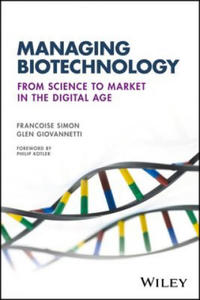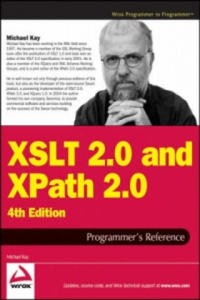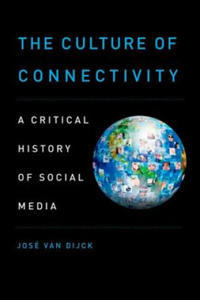libristo user studies for digital library development 5116378
- znaleziono 8 produktów w 4 sklepach
Managing Biotechnology - From Science to Market in the Digital Age John Wiley and Sons Ltd
Książki / Literatura obcojęzyczna
A comprehensive overview of the new business context for biopharma companies, featuring numerous case studies and state-of-the-art marketing modelsBiotechnology has developed into a key innovation driver especially in the field of human healthcare. But as the biopharma industry continues to grow and expand its reach, development costs are colliding with aging demographics and cost-containment policies of private and public payers. Concurrently, the development and increased affordability of sophisticated digital technologies has fundamentally altered many industries including healthcare. The arrival of new information technology (infotech) companies on the healthcare scene presents both opportunities and challenges for the biopharma business model. To capitalize on new digital technologies from R&D through commercialization requires industry leaders to adopt new business models, develop new digital and data capabilities, and partner with innovators and payers worldwide.Written by two experts, both of whom have had decades of experience in the field, this book provides a comprehensive overview of the new business context and marketing models for biotech companies. Informed by extensive input by senior biotech executives and leading consultancies serving the industry, it analyzes the strategies and key success factors for the financing, development, and commercialization of novel therapeutic products, including strategies for engagement with patients, physicians and healthcare payers. Throughout case studies provide researchers, corporate marketers, senior managers, consultants, financial analysts, and other professionals involved in the biotech sector with insights, ideas, and models.JACQUALYN FOUSE, PhD, RETIRED PRESIDENT AND CHIEF OPERATING OFFICER, CELGENE"Biotech companies have long been innovators, using the latest technologies to enable cutting edge science to help patients with serious diseases. This book is essential to help biotech firms understand how they can-and must-apply the newest technologies including disruptive ones, alongside science, to innovate and bring new value to the healthcare system."BRUCE DARROW, MD, PhD, CHIEF MEDICAL INFORMATION OFFICER, MOUNT SINAI HEALTH SYSTEM"Simon and Giovannetti have written an essential user's manual explaining the complicated interplay of the patients who deserve cutting-edge medical care, the biotechnology companies (big and small) creating the breakthroughs, and the healthcare organizations and clinicians who bridge those worlds."EMMANUEL BLIN, FORMER CHIEF STRATEGY OFFICER AND SENIOR VICE PRESIDENT, BRISTOL-MYERS SQUIBB"If you want to know where biopharma is going, read this book! Our industry is facing unprecedented opportunities driven by major scientific breakthroughs, while transforming itself to address accelerated landscape changes driven by digital revolutions and the emergence of value-based healthcare worldwide. In this ever-changing context, we all need to focus everything we do on the patients. They are why we exist as an industry, and this is ultimately what this insightful essay is really about."JOHN MARAGANORE, PRESIDENT AND CHIEF EXECUTIVE OFFICER, ALNYLAM PHARMACEUTICALS"Since the mapping of the human genome was completed nearly 15 years ago, the biotechnology industry has led the rapid translation of raw science to today's innovative medicines. However, the work does not stop in the lab. Delivering these novel medicines to patients is a complex and multifaceted process, which is elegantly described in this new book."
Sklep: Libristo.pl
Gender & the Digital Economy SAGE Publications Ltd
Inne 1
In the discourse on information and communications technologies (ICTs), the focus has been on the, sometimes negative, relocation of jobs from the developed world. This book focuses, instead, on the positive aspects of the introduction of ICTs and shows how they can empower women and make a difference in today's uneven development process. It illustrates, with case studies from Argentina, Morocco, India, Malaysia and the Philippines, how economic empowerment can change the position of women within their families and workplaces. This book shows how to: - distinguish between liberal and neo-liberal theoretical paradigms while analyzing `informational capitalism'; - interrogate the silence and ambiguity among scholars and practitioners regarding gender equality, ICTs and human development; - avoid imposing canons of Western feminism in assessing the benefits of e-trade in societies where social norms are different; and - incorporate feminist principles of inclusion, user-developer interaction and transparency while designing ICT initiatives. Gender and the Digital Economy is an excellent resource for academic researchers, NGOs and industry analysists in the field of international development communication.
Sklep: Albertus.pl
Spalona Żywcem Wyd. Kieszonkowe - Souad
Książki & Multimedia > Książki
Opis - Pierwsze na świecie świadectwo ofiary zbrodni honorowej. Miała siedemnaście lat i zakochała się: zhańbiła rodzinę. Więc rodzina wydała na nią wyrok śmierci... Pokochała go pierwszą miłością. Myślała, że się z nią ożeni. Ale ukochany zniknął, a ona odkryła, że jest w ciąży. A w jej świecie to najcięższa zbrodnia... W zapomnianej przez Boga wiosce w Cisjordanii kobiety są warte mniej niż zwierzęta domowe. Tu mężczyzna jest panem życia i śmierci żony, córki, siostry. Brat może bezkarnie zabić siostrę, matka - córkę, kolejną bezużyteczną dziewczynkę, jaka się urodzi. Tu kobiecie odbiera się godność, a nawet życie zgodnie z odwiecznym obyczajem i uświęconą tradycją. A śmierć jest karą dla dziewczyny, która zhańbi rodzinę. Tak jak Souad. Wyrok wydaje jej ojciec. Szwagier dokonuje egzekucji. Oblewa Souad benzyną i podpala... SOUAD przeżyła - cudem, ale rodzina usiłowała zabić ją nawet w szpitalu. Na zawsze jednak pozostanie straszliwie okaleczona - na ciele i duszy. I wciąż musi się ukrywać; dopóki żyje, jej rodzinę okrywa hańba. Spalona żywcem, opublikowana pod pseudonimem szokująca opowieść o piekle, jakim było jej dzieciństwo i młodość, stała się międzynarodowym bestsellerem. Wydana w 37 w krajach książka przerywa tabu milczenia wobec istniejącej nadal w krajach muzułmańskich barbarzyńskiej tradycji. Nieludzkiego obyczaju, prawa mężczyzn, na mocy którego co najmniej pięć tysięcy kobiet pada co roku ofiarą zbrodni honorowej. Nazwa - Spalona Żywcem Wyd. Kieszonkowe Autor - Souad Oprawa - Miękka Wydawca - Amber Kod ISBN - 9788324159406 Kod EAN - 9788324159406 Wydanie - 1 Rok wydania - 2016 Tłumacz - 31182,maria rostworowska; Format - 110 x 175 x 14 Ilość stron - 224 Podatek VAT - 5% Premiera - 2016-06-23
Sklep: InBook.pl
XSLT 2.0 and XPath 2.0 Programmer's Reference 4e John Wiley & Sons Inc
Książki / Literatura obcojęzyczna
This book is primarily a practical reference book for professional XSLT developers. It assumes no previous knowledge of the language, and many developers have used it as their first introduction to XSLT; however, it is not structured as a tutorial, and there are other books on XSLT that provide a gentler approach for beginners. The book does assume a basic knowledge of XML, HTML, and the architecture of the Web, and it is written for experienced programmers. There's no assumption that you know any particular language such as Java or Visual Basic, just that you recognize the concepts that all programming languages have in common. The book is suitable both for XSLT 1.0 users upgrading to XSLT 2.0, and for newcomers to XSLT. The book is also equally suitable whether you work in the Java or .NET world. As befits a reference book, a key aim is that the coverage should be comprehensive and authoritative. It is designed to give you all the details, not just an overview of the 20 percent of the language that most people use 80 percent of the time.It's designed so that you will keep coming back to the book whenever you encounter new and challenging programming tasks, not as a book that you skim quickly and then leave on the shelf. If you like detail, you will enjoy this book; if not, you probably won't. But as well as giving the detail, this book aims to explain the concepts, in some depth. It's therefore a book for people who not only want to use the language but who also want to understand it at a deep level. The book aims to tell you everything you need to know about the XSLT 2.0 language. It gives equal weight to the things that are new in XSLT 2.0 and the things that were already present in version 1.0. The book is about the language, not about specific products. However, there are appendices about Saxon (the author's own implementation of XSLT 2.0), about the Altova XSLT 2.0 implementation, and about the Java and Microsoft APIs for controlling XSLT transformations, which will no doubt be upgraded to handle XSLT 2.0 as well as 1.0. A third XSLT 2.0 processor, Gestalt, was released shortly before the book went to press, too late to describe it in any detail. But the experience of XSLT 1.0 is that there has been a very high level of interoperability between different XSLT processors, and if you can use one of them, then you can use them all.In the previous edition we split XSLT 2.0 and XPath 2.0 into separate volumes. The idea was that some readers might be interested in XPath alone. However, many bought the XSLT 2.0 book without its XPath companion and were left confused as a result; so this time, the material is back together. The XPath reference information is in self-contained chapters, so it should still be accessible when you use XPath in contexts other than XSLT. The book does not cover XSL Formatting Objects, a big subject in its own right. Nor does it cover XML Schemas in any detail. If you want to use these important technologies in conjunction with XSLT, there are other books that do them justice. This book contains twenty chapters and eight appendixes (the last of which is a glossary) organized into four parts. The following section outlines what you can find in each part, chapter, and appendix. Part I: Foundations: The first part of the book covers essential concepts. You should read these before you start coding.If you ignore this advice, as most people do, then you read them when you get to that trough of despair when you find it impossible to make the language do anything but the most trivial tasks. XSLT is different from other languages, and to make it work for you, you need to understand how it was designed to be used. Chapter 1: XSLT in Context: This chapter explains how XSLT fits into the big picture: how the language came into being and how it sits alongside other technologies. It also has a few simple coding examples to keep you alert. Chapter 2: The XSLT Processing Model: This is about the architecture of an XSLT processor: the inputs, the outputs, and the data model. Understanding the data model is perhaps the most important thing that distinguishes an XSLT expert from an amateur; it may seem like information that you can't use immediately, but it's knowledge that will stop you making a lot of stupid mistakes. Chapter 3: Stylesheet Structure: XSLT development is about writing stylesheets, and this chapter takes a bird's eye view of what stylesheets look like.It explains the key concepts of rule-based programming using templates, and explains how to undertake programming-in-the-large by structuring your application using modules and pipelines. Chapter 4: Stylesheets and Schemas: A key innovation in XSLT 2.0 is that stylesheets can take advantage of knowledge about the structure of your input and output documents, provided in the form of an XML Schema. This chapter provides a quick overview of XML Schema to describe its impact on XSLT development. Not everyone uses schemas, and you can skip this chapter if you fall into that category. Chapter 5: The Type System: XPath 2.0 and XSLT 2.0 offer strong typing as an alternative to the weak typing approach of the 1.0 languages. This means that you can declare the types of your variables, functions, and parameters, and use this information to get early warning of programming errors. This chapter explains the data types available and the mechanisms for creating user-defined types. Part II: XSLT and XPath Reference: This section of the book contains reference material, organized in the hope that you can easily find what you need when you need it.It's not designed for sequential reading, though you might well want to leaf through the pages to discover what's there. Chapter 6: XSLT Elements: This monster chapter lists all the XSLT elements you can use in a stylesheet, in alphabetical order, giving detailed rules for the syntax and semantics of each element, advice on usage, and examples. This is probably the part of the book you will use most frequently as you become an expert XSLT user. It's a "no stone unturned" approach, based on the belief that as a professional developer you need to know what happens when the going gets tough, not just when the wind is in your direction. Chapter 7: XPath Fundamentals: This chapter explains the basics of XPath: the low-level constructs such as literals, variables, and function calls. It also explains the context rules, which describe how the evaluation of XPath expressions depends on the XSLT processing context in which they appear. Chapter 8: XPath: Operators on Items: XPath offers the usual range of operators for performing arithmetic, boolean comparison, and the like.However, these don't always behave exactly as you would expect, so it's worth reading this chapter to see what's available and how it differs from the last language that you used. Chapter 9: XPath: Path Expressions: Path expressions are what make XPath special; they enable you to navigate around the structure of an XML document. This chapter explains the syntax of path expressions, the 13 axes that you can use to locate the nodes that you need, and associated operators such as union, intersection, and difference. Chapter 10: XPath: Sequence Expressions: Unlike XPath 1.0, in version 2.0 all values are sequences (singletons are just a special case). Some of the most important operators in XPath 2.0 are those that manipulate sequences, notably the "for" expression, which translates one sequence into another by applying a mapping. Chapter 11: XPath: Type Expressions: The type system was explained in Chapter 5; this chapter explains the operations that you can use to take advantage of types. This includes the "cast" operation which is used to convert values from one type to another.A big part of this chapter is devoted to the detailed rules for how these conversions are done.Chapter 12: XSLT Patterns: This chapter returns from XPath to a subject that's specific to XSLT. Patterns are used to define template rules, the essence of XSLT's rule-based programming approach. The reason for explaining them now is that the syntax and semantics of patterns depends strongly on the corresponding rules for XPath expressions. Chapter 13: The Function Library: XPath 2.0 includes a library of functions that can be called from any XPath expression; XSLT 2.0 extends this with some additional functions that are available only when XPath is used within XSLT. The library has grown immensely since XPath 1.0. This chapter provides a single alphabetical reference for all these functions. Chapter 14: Regular Expressions: Processing of text is an area where XSLT 2.0 and XPath 2.0 are much more powerful than version 1.0, and this is largely through the use of constructs that exploit regular expressions. If you're familiar with regexes from languages such as Perl, this chapter tells you how XPath regular expressions differ. If you're new to the subject, it explains it from first principles.Chapter 15: Serialization: Serialization in XSLT means the ability to generate a textual XML document from the tree structure that's manipulated by a stylesheet. This isn't part of XSLT processing proper, so (following W3C's lead) it's separated it into its own chapter. You can control serialization from the stylesheet using an declaration, but many products also allow you to control it directly via an API. Part III: Exploitation: The final section of the book is advice and guidance on how to take advantage of XSLT to write real applications. It's intended to make you not just a competent XSLT coder, but a competent designer too. The best way of learning is by studying the work of others, so the emphasis here is on practical case studies. Chapter 16: Extensibility: This chapter describes the "hooks" provided in the XSLT specification to allow vendors and users to plug in extra functionality. The way this works will vary from one implementation to another, so we can't cover all possibilities, but one important aspect that the chapter does cover is how to use such extensions and still keep your code portable.Chapter 17: Stylesheet Design Patterns: This chapter explores a number of design and coding patterns for XSLT programming, starting with the simplest "fill-in-the-blanks" stylesheet, and extending to the full use of recursive programming in the functional programming style, which is needed to tackle problems of any computational complexity. This provides an opportunity to explain the thinking behind functional programming and the change in mindset needed to take full advantage of this style of development. Chapter 18: Case Study: XMLSpec: XSLT is often used for rendering documents, so where better to look for a case study than the stylesheets used by the W3C to render the XML and XSLT specifications, and others in the same family, for display on the web? The resulting stylesheets are typical of those you will find in any publishing organization that uses XML to develop a series of documents with a compatible look-and-feel. Chapter 19: Case Study: A Family Tree: Displaying a family tree is another typical XSLT application.This example with semi-structured data-a mixture of fairly complex data and narrative text-that can be presented in many different ways for different audiences. It also shows how to tackle another typical XSLT problem, conversion of the data into XML from a legacy text-based format. As it happens, this uses nearly all the important new XSLT 2.0 features in one short stylesheet. But another aim of this chapter is to show a collection of stylesheets doing different jobs as part of a complete application. Chapter 20: Case Study: Knight's Tour: Finding a route around a chessboard where a knight visits every square without ever retracing its steps might sound a fairly esoteric application for XSLT, but it's a good way of showing how even the most complex of algorithms are within the capabilities of the language. You may not need to tackle this particular problem, but if you want to construct an SVG diagram showing progress against your project plan, then the problems won't be that dissimilar. Part IV: Appendices: A ppendix A: XPath 2.0 Syntax Summary: Collects the XPath grammar rules and operator precedences into one place for ease of reference.Appendix B: Error Codes: A list of all the error codes defined in the XSLT and XPath language specifications, with brief explanations to help you understand what's gone wrong. Appendix C: Backward Compatibility: The list of things you need to look out for when converting applications from XSLT 1.0. Appendix D: Microsoft XSLT Processors: Although the two Microsoft XSLT processors don't yet support XSLT 2.0, we thought many readers would find it useful to have a quick summary here of the main objects and methods used in their APIs. Appendix E: JAXP: the Java API for XML Processing: JAXP is an interface rather than a product. Again, it doesn't have explicit support yet for XSLT 2.0, but Java programmers will often be using it in XSLT 2.0 projects, so the book includes an overview of the classes and methods available. Appendix F: Saxon: At the time of writing Saxon (developed by the author of this book) provides the most comprehensive implementation of XSLT 2.0 and XPath 2.0, so its interfaces and extensions are covered in some detail. Appendix G: Altova: Altova, the developers of XML Spy, have an XSLT 2.0 processor that can be used either as part of the development environment or as a freestanding component.This appendix gives details of its interfaces. Appendix H: Glossary Note: CD-ROM/DVD and other supplementary materials are not included as part of eBook file.
Sklep: Libristo.pl
End of Wisdom? Elsevier Science & Technology
Książki / Literatura obcojęzyczna
The End of Wisdom? The Future of Libraries in a Digital Age assembles opinion pieces, forecasts, strategy options, and case studies from leading worldwide politicians, academics, educators, authors, publishers, captains of industry, senior public sector workers, library directors, IT gurus and other key players in the field of information provision who discuss their views on the hypothesis surrounding the "end of libraries" and the "death of books." The contributions - ranging in length from 500 to 2000 words are analyzed and summarized to create a rich picture of current trends and likely futures for libraries of all types, with digital options discussed in detail. Focuses on the key issue facing library and information services for the foreseeable futureTakes a much broader view by asking a wide range of key people and representative stakeholders and user groups for their view of the future of libraries of all kindsPresents a comprehensive analysis of likely directions and options for libraries, library managers, and usersIncludes a route map for the futureBuilds on the successful approaches adopted in A Handbook of Digital Library Economics and Libraries and Society
Sklep: Libristo.pl
New Directions in Reference Haworth Press
Inne 1
Librarians work in an environment of constant change created by new technology, budget restraints, inflationary costs, and rising user expectations. "New Directions in Reference" examines how they can use new and innovative methods to design and deliver traditional reference services in a wide range of settings. The book's contributors relate first-hand experiences in libraries large and small, public and academic, and urban and rural dealing with a variety of changes, including virtual reference, music reference, self-service interlibrary loan, e-mail reference, and copyright law. Change isn't new to libraries, but the accelerated pace of change is. Traditional lines that have existed between library departments have been erased and traditional notions about general and specialized reference services have been reconsidered. "New Directions in Reference" documents how librarians are re-thinking their roles and responsibilities to keep pace with the ongoing process of evolution that borders on revolution. "New Directions in Reference" examines: the skills needed to manage and evaluate virtual reference services; the basics of modern copyright law and the Digital Millennium Copyright Act (DMCA); the changes in users, sources, and modes of access in music reference services; the use of interlibrary loan management software that allows patrons to request, track, and renew borrowed materials online; and the "Ask-A-Librarian" e-mail reference service. "New Directions in Reference" also includes case studies, involving the new Martin Luther King Jr. Library in San Jose, California, and the impact of Personal Digital Assistants (PDAs) in providing references services for medical libraries. This important book is an essential professional resource for public, academic, and special librarians, especially those providing reference services.
Sklep: Albertus.pl
Culture of Connectivity Oxford University Press Inc
Książki / Literatura obcojęzyczna
Social media has come to deeply penetrate our lives: Facebook, YouTube, Twitter and many other platforms define many of our daily habits of communication and creative production. The Culture of Connectivity studies the rise of social media in the first decade of the twenty-first century up until 2012, providing both a historical and a critical analysis of the emergence of major platforms in the context of a rapidly changing ecosystem of connective media. Such history is needed to understand how these media have come to profoundly affect our experience of online sociality. The first stage of their development shows a fundamental shift. While most sites started out as amateur-driven community platforms, half a decade later they have turned into large corporations that do not just facilitate user connectedness, but have become global information and data mining companies extracting and exploiting user connectivity. Author and media scholar Jose van Dijck offers an analytical prism to examine techno-cultural as well as socio-economic aspects of this transformation. She dissects five major platforms: Facebook, Twitter, Flickr, YouTube, and Wikipedia.Each of these microsystems occupies a distinct position in the larger ecology of connective media, and yet, their underlying mechanisms for coding interfaces, steering users, and filtering content rely on shared ideological principles. At the level of management and organization, we can also observe striking similarities between these platforms' shifting ownership status, governance strategies, and business models. Reconstructing the premises on which these platforms are built, this study highlights how norms for online interaction and communication gradually changed. "Sharing," "friending," "liking," "following," "trending," and "favoriting" have come to denote online practices imbued with specific technological and economic meanings. This process of normalization, the author argues, is part of a larger political and ideological battle over information control in an online world where everything is bound to become social. Crossing lines of technological, historical, sociological, and cultural inquiry, The Culture of Connectivity will reshape the way we think about interpersonal connection in the digital age.
Sklep: Libristo.pl
BIOLOGY A GLOBAL APPROACH GLOBAL EDITION NOWA URRY WYDAWCA
Podręczniki, artykuły szkolne > Podręczniki do szkół podst. i średnich
Biology: A Global Approach, Global Edition Biology: A Global Approach delivers a trusted, accurate, current, and pedagogically innovative experience that guides students to a true understanding of biology. The author team advances Neil Campbell
Sklep: ksiazkitanie.pl
Sklepy zlokalizowane w miastach: Warszawa, Kraków, Łódź, Wrocław, Poznań, Gdańsk, Szczecin, Bydgoszcz, Lublin, Katowice
Szukaj w sklepach lub całym serwisie
1. Sklepy z libristo pl user studies for digital library development 5116378
2. Szukaj na wszystkich stronach serwisu
t1=0.026, t2=0, t3=0, t4=0.013, t=0.026








